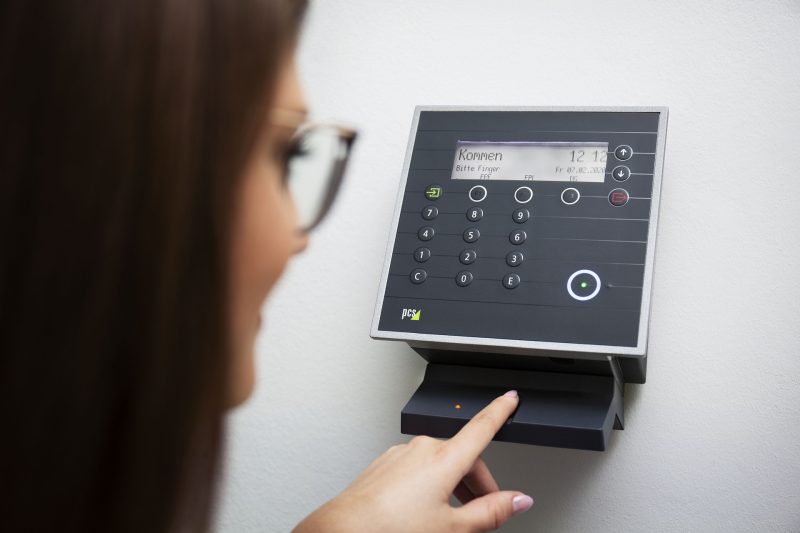In today’s fast-paced business world, productivity is a key factor in determining success. The ability to manage time effectively and efficiently is essential for any organisation to achieve its goals. One of the most effective ways to maximise productivity is by implementing a smart time attendance system.
In this comprehensive guide, we will explore the benefits of smart time attendance systems and how they can help businesses maximise productivity.
What is a Smart Time Attendance System?
A smart time attendance system is an advanced technology that allows businesses to track employee attendance and manage time efficiently.
It is a software-based time attendance system that uses biometric data, such as fingerprints or facial recognition, to record employee attendance. This data is then stored in a central database, which can be accessed by managers and HR personnel to monitor employee attendance and manage time more effectively.
The Benefits of Smart Time Attendance Systems
There are several benefits of implementing a smart time attendance system in your business. These include:
- Accurate Time Tracking: Smart time attendance systems use biometric data to accurately track employee attendance, eliminating the need for manual time tracking. This ensures that employees are paid for the exact amount of time they work, reducing errors and saving time.
- Improved Productivity: Smart time attendance systems can help improve productivity by reducing the amount of time spent on administrative tasks such as manual time tracking. This allows employees to focus on their core tasks, resulting in increased productivity.
- Reduced Labour Costs: Implementing a smart time attendance system can help reduce labour costs by eliminating the need for manual time tracking and reducing errors in payroll processing.
- Increased Security: Smart time attendance systems use biometric data to ensure that only authorised employees have access to the workplace. This helps to increase security and reduce the risk of unauthorised access.
- Real-time Reporting: Smart time attendance systems provide real-time reporting, allowing managers and HR personnel to monitor employee attendance and identify any issues that may arise. This helps to improve decision-making and ensure that the business is running smoothly.
How to Implement a Smart Time Attendance System
Time attendance system in your business requires careful planning and execution. Here are the steps you should follow:
- Identify Your Business Needs: The first step in implementing a smart time attendance system is to identify your business needs. Determine what features you require and what your budget is.
- Choose the Right System: Once you have identified your business needs, you can begin researching and comparing different smart time attendance systems. Look for a system that offers the features you need and fits within your budget.
- Train Your Employees: Once you have chosen a smart time attendance system, it is important to train your employees on how to use it. This will help ensure that the system is used correctly and that all employees are comfortable with it.
- Integrate with Payroll: To maximise the benefits of a smart time attendance system, it is important to integrate it with your payroll system. This will help to reduce errors and streamline the payroll process.
- Monitor and Evaluate: After implementing a smart time attendance system, it is important to monitor and evaluate its effectiveness. This will help you identify any issues and make necessary adjustments to maximise productivity.
Best Practices for Maximising Productivity with Smart Time Attendance Systems
To maximise productivity with a smart time attendance system, it is important to follow these best practices:
- Set Clear Expectations: Clearly communicate your expectations for attendance and time management to your employees. This will help ensure that everyone is on the same page and working towards the same goals.
- Encourage Accountability: Encourage employees to take ownership of their time management and attendance. This will help to promote accountability and ensure that everyone is contributing to the success of the business.
- Use Real-time Reporting: Use the real-time reporting features of your smart time attendance system to monitor employee attendance and identify any issues that may arise. This will help you make informed decisions and take action quickly.
- Reward Good Performance: Reward employees who consistently demonstrate good attendance and time management. This will help to promote a positive culture and encourage others to follow suit.
- Continuously Improve: Continuously evaluate and improve your smart time attendance system to ensure that it is meeting the needs of your business. This will help you stay ahead of the competition and maximise productivity.
Conclusion
The key to success in the fast-paced business world of today is to maximise productivity. Businesses can enhance decision-making, save labour expenses, strengthen security, and improve time management by putting in place a smart time attendance system. You may increase productivity and accomplish your business goals by adhering to best practices and regularly assessing and enhancing your system.

Comments